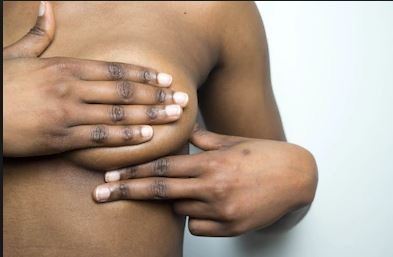October is marked annually as Breast Cancer Awareness Month, a month dedicated to spreading awareness about breast cancer; this article is intended to enlighten you on a breast condition known as Fibroadenoma.
Fibroadenoma is a non-cancerous tumor in the breast that’s commonly found in women between the ages of 15 and 35. They often develop during puberty and are mostly found in young women.
A fibroadenoma might feel firm, smooth, rubbery, or hard and has a well-defined shape. Usually painless, it might feel like a marble in your breast, moving easily under your skin when examined. Fibroadenomas vary in size, and they can enlarge or shrink on their own.
Fibroadenomas are among the most common non-cancerous (benign) breast lumps in young women. The tumor consists of breast tissue and stromal, or connective, tissue.
Fibroadenomas can occur in one or both breasts. Treatment might include monitoring to detect changes in size or feel, a biopsy to evaluate the lump, or surgery to remove it.
Symptoms
Some fibroadenomas are so small they can’t be felt. When you’re able to feel one, it’s very distinct from the surrounding tissue. The edges are clearly defined and the tumors have a detectable shape. They’re movable under the skin and typically not tender. These tumors often feel like marbles, but may have a rubbery feel to them. Note that they are painless.
Causes
The exact cause of Fibroadenomas isn’t known. Hormones such as estrogen may play a part in the growth and development of the tumors. Taking oral contraceptives before the age of 20 has been associated with a higher risk of developing Fibroadenomas as well.
These tumors may grow, particularly during pregnancy. During menopause, they often shrink. It’s also possible for Fibroadenomas to resolve on their own.
Some women have reported that avoiding foods and drinks that are stimulants — like tea, chocolate, soft drinks, and coffee — have improved their breast symptoms. Even though this is worth trying, there are no studies that have scientifically established a link between ingesting stimulants and improving breast symptoms.
Types
The condition attached to Fibroadenoma varies in women and they are;
1.Simple Fibroadenoma
Most Fibroadenomas are about 1–3cm in size and are called simple Fibroadenomas. Simple Fibroadenomas don’t increase the risk of developing breast cancer in the future.
2. Complex Fibroadenoma
This type has to do with changes, such as an overgrowth of cells (hyperplasia) that can grow rapidly. A pathologist makes the diagnosis of a complex Fibroadenoma after reviewing the tissue from a biopsy.
3. Juvenile Fibroadenoma
This is the most common type of breast lump found in girls and adolescents between the ages of 10 and 18. These Fibroadenomas can grow large, but most shrink over time and some disappear with time.
4. Giant Fibroadenoma
This condition can grow to larger than 2 inches (5 centimeters). They might need to be removed because they can press on or replace other breast tissue.
5. Phyllodes Tumor
Although usually benign, some phyllodes tumors can become cancerous (malignant). Doctors usually recommend that this be removed.
What to do if you have fibroadenoma?
For most women, having a Fibroadenoma does not increase the risk of developing breast cancer.
If you were diagnosed with a complex Fibroadenoma, you may be worried that your risk is very slightly increased. However, this doesn’t necessarily mean you will develop breast cancer in the future.
It’s important to continue to be breast aware and go back to your doctor if you notice any changes in your breasts, regardless of how soon these occur even after your diagnosis of a Fibroadenoma.
